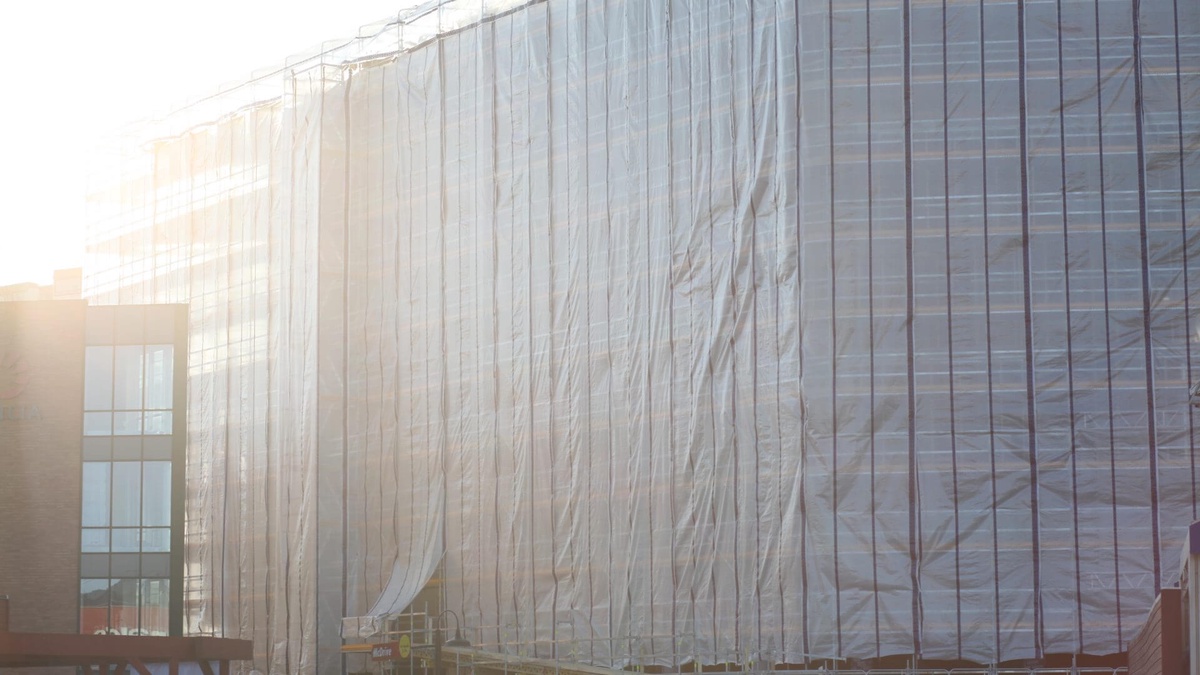When it comes to construction sites, one of the most important factors to consider is the safety of the workers and the materials involved. And to ensure this, scaffolding is a common sight at most construction sites. However, it's not just about putting up scaffolding, but also about how to cover it to protect it from the elements. Two popular options for scaffolding covering are shrink wrap and traditional scaffold coverings. In this post, we will be discussing which option is best suited for construction sites.
Shrink Wrap:
Shrink wrap is a modern-day option that has gained immense popularity in the construction industry. The material used in shrink wrap is a type of plastic that contracts when heated. The heated wrap is then placed over the scaffolding and shrinks to create a tight, seamless cover. Shrink wrap can be used for both interior and exterior scaffolding.
One of the primary benefits of shrink wrap is that it is weather-resistant. It protects the scaffolding from harsh weather conditions like rain, wind, and snow. Additionally, it is also resistant to UV rays, which means it will not degrade or discolor under direct sunlight. Shrink wrap can also help to contain debris and dust on the construction site, which can prevent pollution.
Shrink wrap is also incredibly versatile, and it can be customized to fit any scaffolding shape or size. It can also be installed quickly, which means that it won't disrupt construction timelines or slow down work.
Traditional Scaffold Coverings:
Traditional scaffold coverings have been used for decades, and they are made of materials like tarpaulin, canvas, or netting. They are usually tied or fastened onto the scaffolding, and they provide a basic level of protection from the elements. These traditional coverings are often used in outdoor construction sites.
One of the benefits of traditional scaffold coverings is that they are readily available and can be used immediately. They are also relatively inexpensive compared to shrink wrap. Traditional coverings can be customized to fit different scaffolding shapes and sizes. They also come in different materials that can provide different levels of protection.
However, traditional scaffold coverings have some downsides. For one, they are not as weather-resistant as shrink wrap. In harsh weather conditions, traditional coverings can get damaged or disintegrate. This can cause a safety hazard as debris can fall off the scaffolding. They can also be more challenging to install, which can disrupt construction timelines.
Which Option is Best?
In summary, both shrink wrap and traditional scaffold coverings have their pros and cons. Shrink wrap is more weather-resistant and durable, while traditional coverings are more readily available and can be used immediately. In terms of cost, traditional coverings are cheaper, but in the long run, shrink wrap may be more cost-effective due to its durability.
Ultimately, the decision on which option to use will depend on the construction site's specific needs and requirements. In situations where weather conditions are harsh, and protection is essential, shrink wrap may be the best option. However, for sites that require a quick and inexpensive solution, traditional scaffold coverings may be the better choice.
In conclusion, when it comes to scaffolding coverings, there is no one-size-fits-all solution. Both shrink wrap and traditional scaffold coverings have their advantages and disadvantages. The decision on which option to use will depend on the construction site's specific needs and requirements. By understanding the benefits and drawbacks of each option, construction managers can make informed decisions that prioritize safety, durability, and cost-effectiveness.
Professional Construction and Renovation Services with Shrink Wrap


No comments yet